-
Posts
9,079 -
Joined
-
Last visited
Reputation Activity
-
 Chuck got a reaction from WackoWolf in 18th Century Longboat by Mike Y - Model Shipways - 1:48
Chuck got a reaction from WackoWolf in 18th Century Longboat by Mike Y - Model Shipways - 1:48
The plank should terminate at or just before/after the scarph joint if properly lined off.. The same is true more or less for the pinnace. That is the second photo. The last two are just general planking shots of teh longboat.
Chuck
-
 Chuck got a reaction from gjdale in 18th Century Longboat by Mike Y - Model Shipways - 1:48
Chuck got a reaction from gjdale in 18th Century Longboat by Mike Y - Model Shipways - 1:48
The plank should terminate at or just before/after the scarph joint if properly lined off.. The same is true more or less for the pinnace. That is the second photo. The last two are just general planking shots of teh longboat.
Chuck
-
 Chuck got a reaction from pete48 in 18th Century Longboat by Mike Y - Model Shipways - 1:48
Chuck got a reaction from pete48 in 18th Century Longboat by Mike Y - Model Shipways - 1:48
The plank should terminate at or just before/after the scarph joint if properly lined off.. The same is true more or less for the pinnace. That is the second photo. The last two are just general planking shots of teh longboat.
Chuck
-
 Chuck got a reaction from fnkershner in 18th Century Longboat by Mike Y - Model Shipways - 1:48
Chuck got a reaction from fnkershner in 18th Century Longboat by Mike Y - Model Shipways - 1:48
The plank should terminate at or just before/after the scarph joint if properly lined off.. The same is true more or less for the pinnace. That is the second photo. The last two are just general planking shots of teh longboat.
Chuck
-
 Chuck reacted to Mike Y in 18th Century Longboat by Mike Y - Model Shipways - 1:48
Chuck reacted to Mike Y in 18th Century Longboat by Mike Y - Model Shipways - 1:48
Completed main part of planking. Now the decorative top planks left, they would be a bit special and I will add them after a treenailing and final sanding of the hull.
The hull was just rough sanded, final smooth sanding would be done after treenailing. So please pardon that "hairy" look of the wood!
Currently experimenting with various treenail sizes. Probably will go forward with single treenail per plank, 0.8-0.9mm in diameter.
Half offtopic:
I was walking on one of my favourite islands in Stockholm - so called "Ship Island" (Skeppsholmen). There is a boat building club there:
They do teach how to build and maintain historical boats.. Some very fine examples are tarred and parked nearby:
One day, when the kids will grow up and I will have plenty of time, I will build such boat just for fun.. Very fine workmanship!
-
 Chuck got a reaction from SawdustDave in Mayflower by SawdustDave - Finished
Chuck got a reaction from SawdustDave in Mayflower by SawdustDave - Finished
Congratulations....well deserved.
I just thought I was going crazy while looking at the mayflower......good to get that clarified.
Chuck
-
 Chuck reacted to Rustyj in HMS Winchelsea 1764 by Rustyj - 1/64 - POB - 32-Gun Frigate
Chuck reacted to Rustyj in HMS Winchelsea 1764 by Rustyj - 1/64 - POB - 32-Gun Frigate
Hi Dave, Thanks and once released I'm sure you won't be disappointed.
I had a little more time in the shop thanks to some thunder storms! I've applied a light coat of
wipe on poly. This helps me determine high and low spots that need more sanding.
I will now clean up the highs and lows and then apply a last coat of poly. After that I will finish
the starboard side and then on to the second layer of planking for the wales.
-
 Chuck reacted to Stuntflyer in 18th Century Longboat by Stuntflyer (Mike) - FINISHED - Model Shipways
Chuck reacted to Stuntflyer in 18th Century Longboat by Stuntflyer (Mike) - FINISHED - Model Shipways
Some photos of the mast. The sheaves are there but not seen from this view.
-
 Chuck reacted to Stuntflyer in 18th Century Longboat by Stuntflyer (Mike) - FINISHED - Model Shipways
Chuck reacted to Stuntflyer in 18th Century Longboat by Stuntflyer (Mike) - FINISHED - Model Shipways
Just did my first ever seizing even though it took 5 attempts to get it halfway right.
-
 Chuck got a reaction from MEPering in Mandatory for BUYERS - MUST READ!!!!!
Chuck got a reaction from MEPering in Mandatory for BUYERS - MUST READ!!!!!
Bruce ...dont forget to introduce yourself properly to the forum in the appropriate area. Let folks know who you are. There is nothing more suspect than folks who sign up and simply post stuff for sale and then leave. It happens a lot. Folks here are so much more comfortable with these online transactions if you waited a few weeks and in teh meantime post about your cutrrent projects and your introduction to the hobby.
Otherwise....it gets a bit scary.
Chuck
-
 Chuck got a reaction from JesseLee in Texturing running rigging/weathering
Chuck got a reaction from JesseLee in Texturing running rigging/weathering
I am often asked by folks who buy my rope how they could make it look less new. They want to know how to give it a more weathered or even just textured look like they see on many contemporary models. First I tell them to wait 300 years and it will look just like they want it to.
But then after failing to get a laugh I suggest what I have done for years. Its quick and easy. Its not very messy. But it does take practice. So I figured I would post it here.
Model builders have been running their standing rigging (black or brown) through a candle flame for years. They do this to remove the fuzz. Luckily my rope doesnt have any fuzz. BUT.....should you run your light tan rope through a candle flame....it will pick up some nice color. The soot from the burning candle will give your rope some texture. Multiple passes through the candle will make it darker.
Running it through very quickly will create a very blotchy and uneven look so dont be afraid to take your time. Take as much time to slowly run it through or over the flame. You will have to practice because obviously if you go too slow it will just catch on fire.
Once I run it through the candle flame, I will run the rope between my fingers. This evenly distributes and softens the texturing. In the photo below you will see a brand new and untouched coil of rope and behind it....that was after I ran it through the candle flame twice. If you do it once it wont be as dark but I wanted you guys to actually see the results.
So if you are trying to figure out how to weather or darken the running rigging, you might want to give this a try. I havent tried yet....but I am also wondering if different color candles will impart a different shade of soot.....will have to try that next. This effect came from your standard average white unscented candle.
Click the thumbnail for a really big version.
-
 Chuck got a reaction from mtaylor in 18th Century LongBoat by jburchfield1 - Model Shipways - 1/4" scale - SMALL - 1st ever build
Chuck got a reaction from mtaylor in 18th Century LongBoat by jburchfield1 - Model Shipways - 1/4" scale - SMALL - 1st ever build
Pops
Looking good. You are in a good position to take that cap rail and just thin it down considerably at the bow. That extra piece you added will not be necessary at all. Just carefully thin down the caprail to remove what I have shown below. Then also thin down the frames in that area as well. Dont be afraid to weaken the hull. It will be quite sturdy. Just thin it out. It will make a huge difference.
Chuck
-
 Chuck got a reaction from Brian the extraordinaire in Mayflower Model Shipways planking question
Chuck got a reaction from Brian the extraordinaire in Mayflower Model Shipways planking question
Russ is correct...you can add the keel and stem and even the stern post at any time. One thing you must remember is that every guide or log is only representing the sequences used by that individual builder. There are so many ways to plank the hull. I single planked the prototype also. I would say that if you had planned on double planking you should wait to add the keel. Otherwise it would be too short...or not deep enough. This is why I left it off until after planking. The rabbet is only used for the first layer. A second layer would sit along side the keel and make it look to narrow.
So for you it wouldnt matter.
Here is a photo of my finished hull with just the bottom painted. One layer only below the wales.
-
 Chuck got a reaction from Ryland Craze in 18th Century LongBoat by jburchfield1 - Model Shipways - 1/4" scale - SMALL - 1st ever build
Chuck got a reaction from Ryland Craze in 18th Century LongBoat by jburchfield1 - Model Shipways - 1/4" scale - SMALL - 1st ever build
Pops
Looking good. You are in a good position to take that cap rail and just thin it down considerably at the bow. That extra piece you added will not be necessary at all. Just carefully thin down the caprail to remove what I have shown below. Then also thin down the frames in that area as well. Dont be afraid to weaken the hull. It will be quite sturdy. Just thin it out. It will make a huge difference.
Chuck
-
 Chuck reacted to fnkershner in 18th century Longboat by fnkershner (Floyd Kershner) - Model Shipways - 1:48
Chuck reacted to fnkershner in 18th century Longboat by fnkershner (Floyd Kershner) - Model Shipways - 1:48
So let me offer an update as we go into the weekend.
The first picture shows the false deck and scrap for grabbing (thank you Mike)
The last Picture shows it in the vice. Let the Fairing Begin!
-
 Chuck got a reaction from Maury S in Texturing running rigging/weathering
Chuck got a reaction from Maury S in Texturing running rigging/weathering
I am often asked by folks who buy my rope how they could make it look less new. They want to know how to give it a more weathered or even just textured look like they see on many contemporary models. First I tell them to wait 300 years and it will look just like they want it to.
But then after failing to get a laugh I suggest what I have done for years. Its quick and easy. Its not very messy. But it does take practice. So I figured I would post it here.
Model builders have been running their standing rigging (black or brown) through a candle flame for years. They do this to remove the fuzz. Luckily my rope doesnt have any fuzz. BUT.....should you run your light tan rope through a candle flame....it will pick up some nice color. The soot from the burning candle will give your rope some texture. Multiple passes through the candle will make it darker.
Running it through very quickly will create a very blotchy and uneven look so dont be afraid to take your time. Take as much time to slowly run it through or over the flame. You will have to practice because obviously if you go too slow it will just catch on fire.
Once I run it through the candle flame, I will run the rope between my fingers. This evenly distributes and softens the texturing. In the photo below you will see a brand new and untouched coil of rope and behind it....that was after I ran it through the candle flame twice. If you do it once it wont be as dark but I wanted you guys to actually see the results.
So if you are trying to figure out how to weather or darken the running rigging, you might want to give this a try. I havent tried yet....but I am also wondering if different color candles will impart a different shade of soot.....will have to try that next. This effect came from your standard average white unscented candle.
Click the thumbnail for a really big version.
-
 Chuck got a reaction from MEDDO in Texturing running rigging/weathering
Chuck got a reaction from MEDDO in Texturing running rigging/weathering
I am often asked by folks who buy my rope how they could make it look less new. They want to know how to give it a more weathered or even just textured look like they see on many contemporary models. First I tell them to wait 300 years and it will look just like they want it to.
But then after failing to get a laugh I suggest what I have done for years. Its quick and easy. Its not very messy. But it does take practice. So I figured I would post it here.
Model builders have been running their standing rigging (black or brown) through a candle flame for years. They do this to remove the fuzz. Luckily my rope doesnt have any fuzz. BUT.....should you run your light tan rope through a candle flame....it will pick up some nice color. The soot from the burning candle will give your rope some texture. Multiple passes through the candle will make it darker.
Running it through very quickly will create a very blotchy and uneven look so dont be afraid to take your time. Take as much time to slowly run it through or over the flame. You will have to practice because obviously if you go too slow it will just catch on fire.
Once I run it through the candle flame, I will run the rope between my fingers. This evenly distributes and softens the texturing. In the photo below you will see a brand new and untouched coil of rope and behind it....that was after I ran it through the candle flame twice. If you do it once it wont be as dark but I wanted you guys to actually see the results.
So if you are trying to figure out how to weather or darken the running rigging, you might want to give this a try. I havent tried yet....but I am also wondering if different color candles will impart a different shade of soot.....will have to try that next. This effect came from your standard average white unscented candle.
Click the thumbnail for a really big version.
-
 Chuck got a reaction from Gerald Spargo in Texturing running rigging/weathering
Chuck got a reaction from Gerald Spargo in Texturing running rigging/weathering
I am often asked by folks who buy my rope how they could make it look less new. They want to know how to give it a more weathered or even just textured look like they see on many contemporary models. First I tell them to wait 300 years and it will look just like they want it to.
But then after failing to get a laugh I suggest what I have done for years. Its quick and easy. Its not very messy. But it does take practice. So I figured I would post it here.
Model builders have been running their standing rigging (black or brown) through a candle flame for years. They do this to remove the fuzz. Luckily my rope doesnt have any fuzz. BUT.....should you run your light tan rope through a candle flame....it will pick up some nice color. The soot from the burning candle will give your rope some texture. Multiple passes through the candle will make it darker.
Running it through very quickly will create a very blotchy and uneven look so dont be afraid to take your time. Take as much time to slowly run it through or over the flame. You will have to practice because obviously if you go too slow it will just catch on fire.
Once I run it through the candle flame, I will run the rope between my fingers. This evenly distributes and softens the texturing. In the photo below you will see a brand new and untouched coil of rope and behind it....that was after I ran it through the candle flame twice. If you do it once it wont be as dark but I wanted you guys to actually see the results.
So if you are trying to figure out how to weather or darken the running rigging, you might want to give this a try. I havent tried yet....but I am also wondering if different color candles will impart a different shade of soot.....will have to try that next. This effect came from your standard average white unscented candle.
Click the thumbnail for a really big version.
-
 Chuck got a reaction from Mike Y in Texturing running rigging/weathering
Chuck got a reaction from Mike Y in Texturing running rigging/weathering
I am often asked by folks who buy my rope how they could make it look less new. They want to know how to give it a more weathered or even just textured look like they see on many contemporary models. First I tell them to wait 300 years and it will look just like they want it to.
But then after failing to get a laugh I suggest what I have done for years. Its quick and easy. Its not very messy. But it does take practice. So I figured I would post it here.
Model builders have been running their standing rigging (black or brown) through a candle flame for years. They do this to remove the fuzz. Luckily my rope doesnt have any fuzz. BUT.....should you run your light tan rope through a candle flame....it will pick up some nice color. The soot from the burning candle will give your rope some texture. Multiple passes through the candle will make it darker.
Running it through very quickly will create a very blotchy and uneven look so dont be afraid to take your time. Take as much time to slowly run it through or over the flame. You will have to practice because obviously if you go too slow it will just catch on fire.
Once I run it through the candle flame, I will run the rope between my fingers. This evenly distributes and softens the texturing. In the photo below you will see a brand new and untouched coil of rope and behind it....that was after I ran it through the candle flame twice. If you do it once it wont be as dark but I wanted you guys to actually see the results.
So if you are trying to figure out how to weather or darken the running rigging, you might want to give this a try. I havent tried yet....but I am also wondering if different color candles will impart a different shade of soot.....will have to try that next. This effect came from your standard average white unscented candle.
Click the thumbnail for a really big version.
-
 Chuck reacted to dcicero in 18th Century Longboat by dcicero - FINISHED - Model Shipways - 1:48 - Tri-Club
Chuck reacted to dcicero in 18th Century Longboat by dcicero - FINISHED - Model Shipways - 1:48 - Tri-Club
I've been pretty busy lately, so not a lot of progress has been made on my longboat. Got some stuff done over the weekend, though, so I figured it was time for an update.
A couple of weeks ago, I brought the model up to Manitowoc, WI for the 38th Annual Model Ships and Boats Show and Contest at the Wisconsin Maritime Museum. What a great event in a great location! Obviously, the longboat was there just for display this year. Next year, it'll be in the contest.
Back in the workshop and motivated by all the great models I saw in Manitowoc, I started installing the knees around the boat. There really isn't much to this. They go in pretty easily for the most part.
The two knees in the bow and the part that fits around the bow itself were a little trickier. I got the knees in last night (and didn't take a picture) and the bow piece is going to take a little surgery. The part in the kit needed to be sanded down quite a lot to fit the bow, to the point where it really didn't look correct. I'll take a swing at making a new part and fitting it in.
Next came the windlass. I was a little apprehensive about this part. Bob Filipowski made a presentation at our last NRMSS meeting about how he made his windlass. Looked like a tricky operation. Here's how I did it.
The first thing I needed to figure out was how to make those eight sides all parallel to the centerline of the windlass. I cut the square stock and marked the locations of the various sections of the windlass. I plunked the square stock on my building board. That held it securely in place and gave me a reference to the centerline of the windlass.
Then I carefully sanded, using a sanding stick, parallel to the building board. It only took, maybe, four passes with the sanding stick to finish off one of the sides.
As the instructions say, I scored the lines between the sections to make them stand out more. And I made the square holes almost the same way Chuck did. The difference? The business end of my square file is square, but the other end is round. I had to use the business end, which worked out fine. (Getting the sawdust out of those little holes was a little tricky!)
Then I drilled holes in the end of the windlass and put short pieces of wire in them. Here they are, prior to trimming.
I wish I'd taken a picture of the end of the windlass. You can clearly see eight sides, all nice and symmetrical.
And so here it is, installed.
Chuck mentions that the wire axles on the end of the windlass need to be short. He's right about that. I ended up trimming them down to almost nothing to get them to fit into the small holes in the risers. Once installed, though, the thing rotates just as it should!
I didn't take pictures of them yesterday, but I also installed the two lifting rings in the bottom of the boat. They look good and add a nice level of detail to this model. More pictures of that stuff to follow.
Dan
-
 Chuck got a reaction from dgbot in 18th Century LongBoat by jburchfield1 - Model Shipways - 1/4" scale - SMALL - 1st ever build
Chuck got a reaction from dgbot in 18th Century LongBoat by jburchfield1 - Model Shipways - 1/4" scale - SMALL - 1st ever build
Pops
Looking good. You are in a good position to take that cap rail and just thin it down considerably at the bow. That extra piece you added will not be necessary at all. Just carefully thin down the caprail to remove what I have shown below. Then also thin down the frames in that area as well. Dont be afraid to weaken the hull. It will be quite sturdy. Just thin it out. It will make a huge difference.
Chuck
-
 Chuck got a reaction from fnkershner in 18th Century LongBoat by jburchfield1 - Model Shipways - 1/4" scale - SMALL - 1st ever build
Chuck got a reaction from fnkershner in 18th Century LongBoat by jburchfield1 - Model Shipways - 1/4" scale - SMALL - 1st ever build
Pops
Looking good. You are in a good position to take that cap rail and just thin it down considerably at the bow. That extra piece you added will not be necessary at all. Just carefully thin down the caprail to remove what I have shown below. Then also thin down the frames in that area as well. Dont be afraid to weaken the hull. It will be quite sturdy. Just thin it out. It will make a huge difference.
Chuck
-
 Chuck got a reaction from PeteB in HMS Sphynx 1775 by Alex M - Scale 1/48 - English 20-Gun Frigate
Chuck got a reaction from PeteB in HMS Sphynx 1775 by Alex M - Scale 1/48 - English 20-Gun Frigate
BOO-HOOO
Ron.....You really must do a log.....dont be shy, it would be a real treat to follow. I know how inspired you have been and how much help MSW has been for your own model building progression....why not pay it forward?
Chuck
-
 Chuck got a reaction from hollowneck in HMS Sphynx 1775 by Alex M - Scale 1/48 - English 20-Gun Frigate
Chuck got a reaction from hollowneck in HMS Sphynx 1775 by Alex M - Scale 1/48 - English 20-Gun Frigate
BOO-HOOO
Ron.....You really must do a log.....dont be shy, it would be a real treat to follow. I know how inspired you have been and how much help MSW has been for your own model building progression....why not pay it forward?
Chuck
-
 Chuck got a reaction from gjdale in HMS Sphynx 1775 by Alex M - Scale 1/48 - English 20-Gun Frigate
Chuck got a reaction from gjdale in HMS Sphynx 1775 by Alex M - Scale 1/48 - English 20-Gun Frigate
BOO-HOOO
Ron.....You really must do a log.....dont be shy, it would be a real treat to follow. I know how inspired you have been and how much help MSW has been for your own model building progression....why not pay it forward?
Chuck

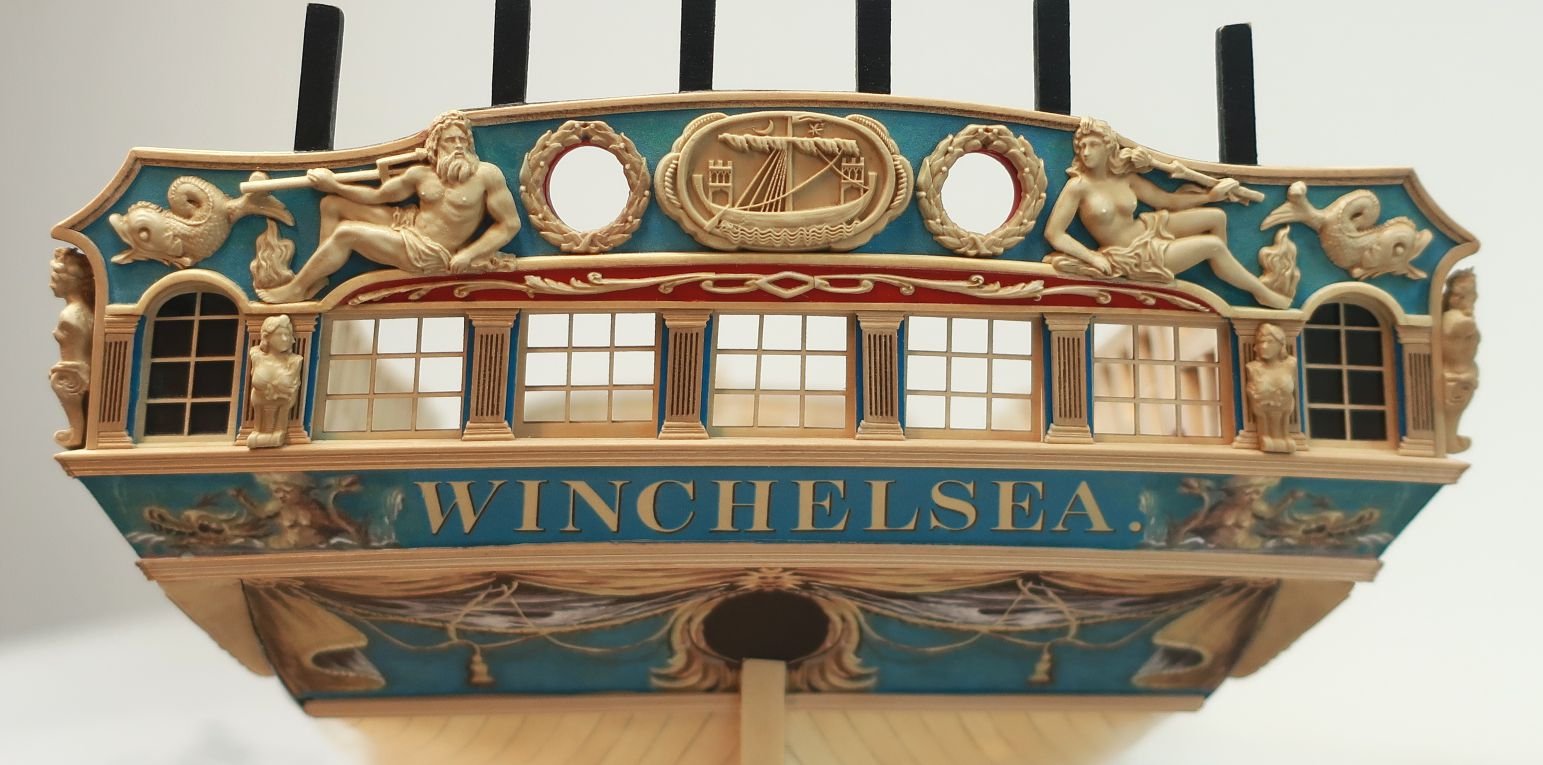



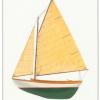

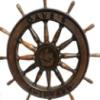



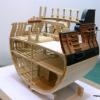

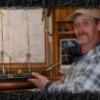


.jpg.d84ec4dad1d7791e855dca06210ab6f3.thumb.jpg.f45209242e851d4409eca1a09293165b.jpg)